Keynote Speakers
Tuesday, April 18, Conference Keynote Speaker
Jim Eck
Assistant Administrator for NextGen, Federal Aviation Administration
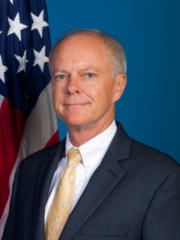
Jim Eck is the assistant administrator for NextGen at the Federal Aviation Administration (FAA). The NextGen organization is responsible for leading the modernization of the National Airspace System (NAS), the move to a smarter, satellite-based system with digital technologies and advanced procedures that will ensure safe and efficient air travel for decades to come. Mr. Eck leads a federal workforce of about 900 employees and manages the $1 billion annual budget of the Next Generation Air Transportation System. His office also oversees the world’s leading aviation research complex at the William J. Hughes Technical Center in Atlantic City, New Jersey.
Formerly, Jim served as the vice president of the Program Management Organization (PMO) responsible for all NextGen program activity, infrastructure modernization programs, and service to legacy NAS infrastructure. Jim has worked acquisition programs since joining the FAA in 1996. In addition to program development and execution, he has been active in leading acquisition management policy and workforce development.
Tuesday, April 18, Evening Exhibitor Reception, Keynote Speaker
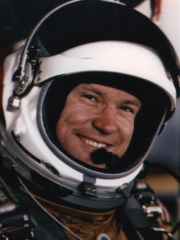
Buz Carpenter, “Kelly’s Greatest Challenge: The SR-71”
Hailing from Oakland, California, Buz Carpenter graduated from the U.S.AF Academy in June 1967 and then completed pilot training at Williams AFB, AZ Sept 1968.
Aircraft Flown
- C-141 worldwide airlift as an aircraft commander – 1350 hrs
- RF-4C in Vietnam combat with 150 combat hours and later in Japan, served as flight commander and instructor pilot – 1150 hours
- SR-71 flown worldwide as an aircraft commander and later instructor pilot with over 60+ operational missions accruing 777 hours.
- T-38 companion trainer and instructor pilot – 500+ hours
- U.S.AF Blackworld programmer in Pentagon involving programs such as F-117, B-2 Bomber, F-22 and others.
- F-4E fighter squadron commander – 450+ hours. Converted squadron into F-16 A/Bs
- Wing commander in Europe at Ramstein AB, Germany during the Gulf War – Desert Shield & Desert Storm
- U-2 flights as staff officer – 12+ hours
Retired as colonel after serving as the 2nd Air Force vice commander. 2nd AF was responsible for all the U.S.AF intelligence, surveillance and reconnaissance flying assets. Currently a docent at the Udvar-Hazy Center of the National Air & Space Museum at Dulles Airport.
Plenary Chairs
Tuesday, April 18, Global Harmonization of CNS
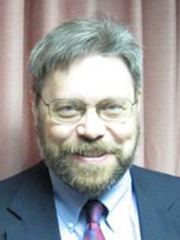
Steve Bradford
Steve Bradford is chief scientist for architecture and next generation (NextGen) development in the FAA’s NextGen Office. In this role, he has participated in the development of the Joint Planning and Development Office’s (JPDO) NextGen concept, the RTCA National Airspace System (NAS) Operational Concept and the ICAO Air Traffic Management Operational Concepts Panel (ATMCP) Global Concept. He is the chairman of the Technical Review Board which monitors technical decisions related investments and the enterprise architecture.
He also works with elements of the FAA and the JPDO to develop midterm plans and five year budget requests to implement NextGen. He has a leading role in several new activities with SESAR Joint Undertaking (SJU) and has led several cooperative international efforts via action plans with EUROCONTROL. Previous activities include leading efforts to validate future concepts and developing the FAA’s NAS enterprise architecture.
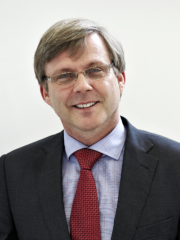
Michael Standar
Michael Standar is the chief strategies and external relations at the SESAR Joint Undertaking (SJU) based in Brussels, Belgium. He became chief of air traffic management in July 2011 and was promoted to his current position in January 2012. He was an active Swedish member of ICAO Air Traffic Management Operational Concepts Panel (ATMCP) developing the ICAO Global Air Traffic Management (ATM) Operational Concept Document, which continued into the Air Traffic Management Requirements and Performance Panel (ATMRPP).
In the early 1990s, he was offered a post at the Swedish Civil Aviation Administration (CAA) headquarters, later the LFV (Swedish Civil Aviation Administration) ANS (Air Navigation Services) service provider. There, he was promoted first to head units for ATM operational developments and operational support and later head of the business area of LFV’s ATM support and development before taking up duties as LFV director for ANS business development.
Plenary Keynote: Steve Creamer
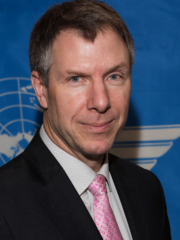
Steve Creamer has served as director of the Air Navigation Bureau at the International Civil Aviation Organization (ICAO) since April 2015. He previously held a number of executive and managerial positions at the Federal Aviation Administration (FAA) and has over 33 years’ experience in the Air Traffic and International Aviation Organizations. They include serving as FAA regional office director for Europe, Africa and the Middle East; and serving as a member of the ICAO Air Navigation Commission.
Steve began his career in air traffic operations, eventually managing all Alaskan and North Pacific airspace, pioneering new airspace use techniques that improved capacity and access for all operators. More recently his work has broadened to the international implementation of procedures and technology systems that improve aviation safety, with a careful eye toward retaining capacity and efficiency.
Wednesday, April 19, Satellites for CNS
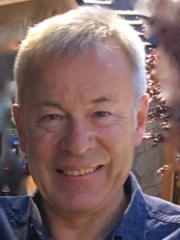
Rainer J. Koll
Rainer J. Koll has over 30 years’ technical and executive management experience in aerospace industries. During that time, advancement of the aviation communications state of the art has been at the heart of his career. Working as engineering group leader and director at Inmarsat and ICO Global Communications, he was responsible for the classic aero satcom and next generation satellite system (NGSS) developments.
As managing director and VP of Thales Avionics Ltd. (UK), Rainer Koll chaired the Honeywell/Thales Executive Committee that managed the joint ARINC 741 Satcom business. He also launched the ARINC 781 developments for Thales’s TopFlight satcom.
From 2010 to 2015, Koll was chief executive of Stellar Solutions Aerospace Ltd. He is now senior advisor at Stellar Solutions and focuses on advising the FAA on SESAR/NextGen satcom standardization and harmonization tasks.

Nikos Fistas
Dr. Nikos Fistas has been working for EUROCONTROL since 1997 involved in investigations, the definition, the development and the standardization of data links for communication (VDLs, SATCOM, AeroMACS, LDACS), as well as, for surveillance purposes. Nikos has been representing EUROCONTROL in various international standardization groups (such as in ICAO, EUROCAE, RTCA and ETSI) covering data link aspects. In ICAO, he leads the new ICAO Communication Panel Working Group for the update of the SATCOM provisions (PT-S).
In EUROCONTROL, Nikos oversees the activities for the future aeronautical communication infrastructure (FCI). For SESAR he is the focal point for the COM solutions in the SESAR2020 PJ14 project, as well as, overseeing the relevant international coordination aspects with ICAO and CP4.4 with U.S. FAA. Nikos has a Master of Science in electrical engineering from the University of Thessaloniki (1988) and continued his studies with both a Master of Science and a doctorate at the Imperial College in London (1990 and 1994).
Thursday, April 20, CNS for UAS Integration
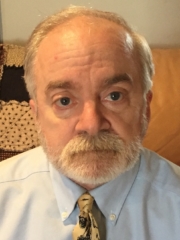
Stephen Van Trees
Stephen P. Van Trees is lead, Communications Team, AIR-132, Aircraft Certification Service, FAA, Washington, D.C. His team works in data communications, weather systems, and unmanned aircraft systems (UAS). He is currently co-chair of the Command and Control (C2) Working Group for SC-228, the RTCA committee for UAS. The committee defines communications requirements for large UAS in controlled airspace. Last year, the group completed DO-362, the first MOPS for UAS C2. Prior to this, he was active as aircraft road map lead in the national airspace system (NAS) enterprise architecture effort, integrating aircraft equipage and approval with overall NAS planning.
Over the last 20 years with the FAA he has held a variety of technical and management positions, including six years as manager, Avionics Systems Branch (AIR-130). The branch was the first in the FAA to manage UAS integration. He joined the FAA as an engineer in the data communication area, after working in a lead role in the U.S. team for development of the ICAO SARPs for the Aeronautical Telecommunication Network (ATN). He holds a Master of Science from George Mason University (computer science).
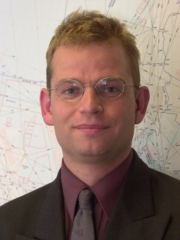
Paul Bosman
Paul Bosman has worked for EUROCONTROL for over 25 years in many different roles and functions. He is now the head of ATM Strategies Division, which includes EUROCONTROL contributions to the European ATM Master Plan, international cooperation (including FAA and ICAO), RPAS activities, architecture, SWIM and support to deployment. He is also the EUROCONTROL member of the ICAO Information Management Panel.
ICNS Conference Chairs
Conference General Chair
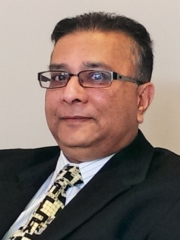
Aloke Roy
Mr. Aloke Roy is a senior program manager with Honeywell Advanced Technology. He currently manages data communication, information security and radio technology development programs supporting Honeywell Aerospace. Previously, Mr. Roy was director of programs at Flextronics Corporation managing several major telecommunications OEM accounts. In this role, Mr. Roy was responsible for business development, outsourcing, and globalization of hardware design activities supporting large volume contract electronic manufacturing. His prior experiences include various positions at AT&T Bell Laboratories and ARINC Aviation Systems Division.
As systems engineering director at ARINC, Mr. Roy oversaw development of SATCOM, HF, VDL, ATIS, and PDC standards and services. Currently, Mr. Roy chairs ICAO ACP Working Group “S” and RTCA Special Committee 223, which are developing the Aeronautical Mobile Airport Communication System requirements and operational performance standards. Mr. Roy holds several patents on aeronautical, wireless and secure communications.
Technical Chair
Benjamin Levy

Dr. Benjamin Levy works for MCR, LLC as a senior operations research analyst. His work supports the U.S. FAA in their Acquisition Management System process. Prior to joining MCR, he ran his own company, was the manager of the Operations Research group in the Advanced Development Division of Sensis Corporation, worked at MITRE/CAASD, and earned his doctorate at the University of Maryland/College Park. He is the author of more than 20 papers and presentations relating to air traffic management and has been past general and technical chair for the DASC and ICNS conferences.
Workshop Chairs

Lance Sherry
Lance Sherry is associate professor of systems engineering and operations research at George Mason University. Dr. Sherry also serves as the director of the Center for Air Transportation Systems Research at George Mason University. Dr. Sherry has over 30 years’ experience in the aviation industry serving as a flight-test engineer, flight control engineer, system engineer, lead system architect, program manager, strategic planning and business development.
Dr. Sherry served as a fellow at RAND Corporation 1999-2001. He has published over 100 papers and journal articles, holds several patents, and has received awards for his work. Dr. Sherry is a graduate of Brown University with a Bachelor of Science in electrical engineering, and he holds both a Master of Science and a doctorate in industrial and system engineering from Arizona State University.
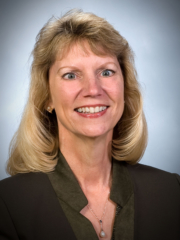
Denise Ponchak
Ms. Denise S. Ponchak is the deputy branch chief of the Communications Architectures, Networks and Systems Branch at the National Aeronautics and Space Administration’s (NASA) Glenn Research Center at Lewis Field in Cleveland, Ohio. The branch is responsible for designing advanced networking concepts, architectures, technologies and system integration for aeronautics and space applications.
Prior to becoming a supervisor, Ms. Ponchak was an aeronautical communications project manager focusing on increasing the National Airspace System (NAS) telecommunications capability, and a communications research engineer supporting future satellite-based communications. She holds both a Bachelor of Science and a Master of Science in electrical engineering from Cleveland State University in 1983 and 1988 respectively.

